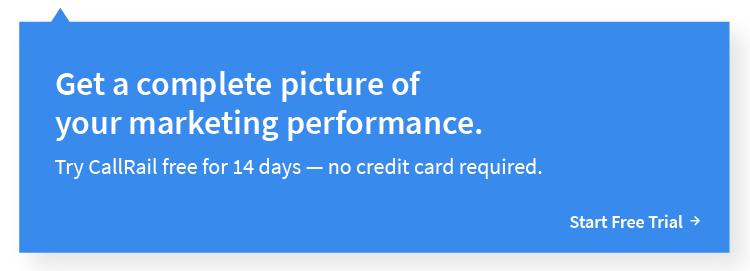Sales prospecting is the process of identifying potential new customers and proactively reaching out to them with cold calls, emails, and social messaging in an effort to convert them into paying customers. For most businesses, this is typically done by representatives of the sales team.
Why businesses should use outbound marketing, not just inbound
Inbound marketing is a great way to drive sales-ready leads to contact your business, and then move through the sales funnel. Many of these leads reach out because they have a problem that your business can solve — whether that be through a product or service — but first, they must have a baseline level of awareness that you can help them.
Many potential customers are simply unaware of what you do, or are using a competitor that might not offer nearly as many benefits and solutions as your business. That said, if a customer is unaware that a better solutions exists, they won’t be driven to look for one. This is where outbound sales comes into play: Reaching out to perfect fit prospects who wouldn’t contact to you otherwise, and convincing on-the-fence leads to take the next step.
Prospects VS leads: What’s the difference?
Prospects are potential buyers that likely have a problem that your business can solve. They’ve probably had little to no interaction with your website, and have not shown that they’re actively in need of your services.
Leads are potential buyers that have shown interest in your solution by visiting your website, following you on social media, responding to messaging, or giving general signs that they’re in need of the solution you’re selling.
Prospects and leads are both potential customers, and likely require proactive outreach to convert into customers. A mixed approach of inbound marketing to drive leads and outbound marketing by prospecting to find new opportunities can help you increase revenue, shorten your sales cycle, and grow your customer base without solely relying on inbound marketing.
Prospecting tips: Where can I find prospects?
Sales prospects can be found a myriad of ways, some more effective than others depending on the buyer personas you’re focused on and what industry they’re in.
1) Google
Google search is a great way to find businesses that could benefit from what your business has to offer. Using Google is free and easy, but it can also be rather time-consuming, and some of your work might end up being redundant. One rule of thumb: The more specific your search, the better your results.
2) LinkedIn
LinkedIn can help you pointedly search for businesses that fit your ideal customer profile. An added benefit of Linkedin is that in addition to finding the business, you can find the individual prospect that best fits your ideal buyer persona. LinkedIn Premium is a paid version that while expensive, gives unlimited searches and the ability to get more flexible with social media outreach.
3) Twitter
You might not realize it, but social media platforms like Twitter can be a powerful tool for sales reps when searching for your ideal customer. Look at the followers of the accounts of companies or individuals that are of interest to your prospects. Then, you can cross-reference these followers with your research on the other platforms mentioned in this article to find new prospects.
4) Industry-specific lead services
Depending on the industry in which your ideal customer works, you can likely find a service that provides a list of sales prospects based on your customer profile. While often pricey, you’ll save time prospecting by partnering with a service that specializes in the industry you’re targeting.
Examples: D&B Hoovers, Agency Spotter
5) Credit-reporting services
If your customer base routinely pays for services that would indicate their scale and level of need, a credit reporting service can help you identify them to create a prospect list. For instance: If your ideal customers ship freight, you can find how much they pay transportation carriers monthly, and even search by spend in specific areas.
Examples: Ansonia Credit Data, Cortera
6) Sales intelligence tools
Your ideal customers are often using services or technologies related to what you offer. By making effective use of sales intelligence tools, you can find prospects who are a perfect fit for your services, like an unfinished puzzle just waiting for you to place the final piece.
Examples: BuiltWith, Seamless.Ai
7) Third-party user review sites
Reading competitor reviews can help you find prospects not happy with their current solution. Find a competitor, look at the 1-and 2-star reviews, and reach out to those unhappy clients. By acting quickly and coming in with a sales pitch that includes referrals and case studies, this outreach will typically turn into a successful sale.
Examples: G2Crowd, Yelp, TrustPilot
The post What is sales prospecting? appeared first on CallRail.


